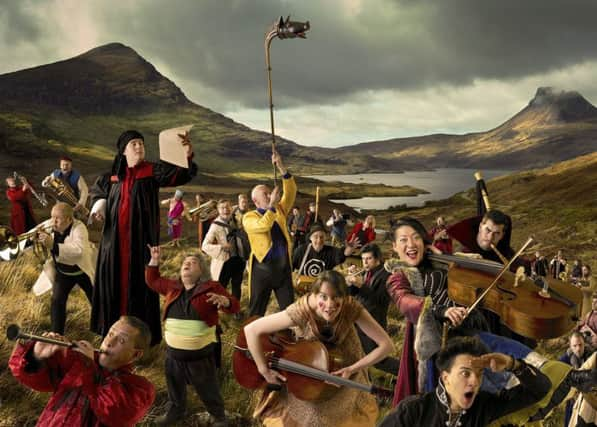Music reviews: La Banda Europa | Trilok Gurtu & Evelyn Glennie


La Banda Europa *****
Glasgow Royal Concert Hall
Trilok Gurtu & Evelyn Glennie: The Rhythm in Me *****
Glasgow Royal Concert Hall
We had already been culturally acclimatised by a spirited opening set from Galician percussionist and singer Xabier Diaz who, along with a fiddler, an accordionist and the seven women singer-percussionists of Adufeiras de Salitre, raised the dust with their passionate singing and with a sizzle of Galician tambourines and hand drums.
La Banda’s arsenal of tones and timbres ranged from harrumphing brass to assorted bagpipes and the eldritch wheedling of hurdy-gurdies and nyckelharpas. There was the high spirited promenading of The Dean Tavern march, a marimba-led tango, and the memorable opening of Before the Wolf, with its baying of ancient carnyx war horns over a spooky whining of musical saws. A few more solo spots might have made it an even greater show.
Advertisement
Hide AdAdvertisement
Hide AdCross-cultural creativity was maintained in no uncertain manner on Wednesday night by Evelyn Glennie and Trilok Gurtu, whose show, The Rhythm in Me, saw the two internationally renowned percussion virtuosi, Scots and Indian, joined by Glennie’s regular accompanist on piano, Philip Smith, and Indian violinist Kumaresh Rajagopalan.
An opening set by the five-piece Jarlath Henderson Band saw the Irish piper and, these days, an acclaimed singer, somewhat swamped by the volume of his colleagues’ inventive electronica, his voice unduly amplified to compete. Glennie and Gurtu proved explosive in their own right, each working within a hefty assembly of kit (Glennie’s winning by a marimba or so).
They played virtually without interruption, with musical colloquy and crossfire a-plenty, Glennie’s drums erupting over the steady tap and whirr of Gurtu’s tablas, vibraphone chiming against the quavering microtonal singing of Carnatic violin, the classical pianist entering surprisingly easily into the fray, bolstering an angular, minimalist riff or invoking an eerie nocturne – night noises in a petrified forest, with vibraphone, the haunting whine of violin and sighing cymbals. Elsewhere, spooky, bowed cymbal sounds and eruptions from Glennie met with responding volleys, chants and wobbly water gongs from Gurtu, while the two crouched intently, side by side, for a box drum duet.
Finally, Gurtu’s rapid-fire konnakol vocables gave way to cajoling a delighted audience into drone-intoning and part-singing while Glennie, over a shimmer of vibraphone, recited Burns’s lines of universal brotherhood, “It’s coming yet for a’ that,” underlined by Gurtu’s unequivocal declaration: “We are one.”